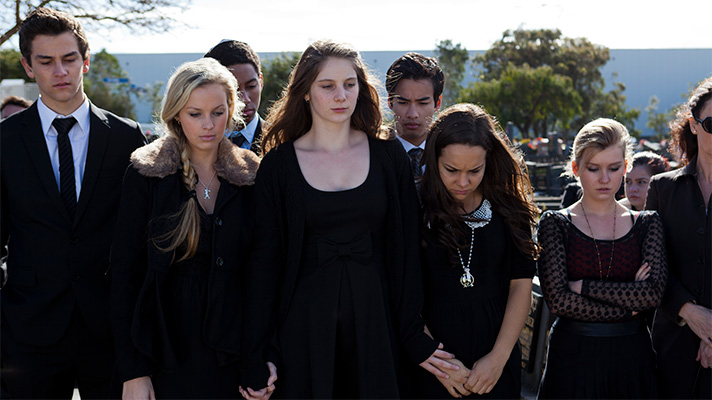The loss of linear: what might our kids be missing out on?
Maggie Orr
18 Feb 2025
Most of us will remember our first experience of grief. For me, and for many of my friends, it happened in Grade 6. Someone close to us died unexpectedly, and we were shaken. The morning after it happened, we entered our classroom and a student put up her hand and said, “Can we have a minute of silence before the roll today to mourn Sammy?” Our teacher had to ask who Sammy was. We explained that he was a fictional character in our favourite series, Dance Academy.
This memory has struck a chord with me recently while watching Apple TV’s hit show Severance. Like millions of others, I’m on the edge of my seat waiting for the next episode to come out each Friday. My algorithm is full of Severance theories as fans grasp at every possible clue to all the questions still unanswered.
This is the first time since childhood watching after-school TV that I have felt the kind of connection that comes from being completely invested in a TV show and sharing the anticipation of what will happen next with millions of other people who are also dying to find out.
While I wait for the next episode, I analyse as many tiny details from the previous episode as I can remember. I consider the questions the show raises, such as, what is work life balance? How important is it to feel a sense of purpose from your job?
This experience is unique because in this landscape of on-demand viewing, I ordinarily binge watch content. With every episode available to me, there is no enforced break between episodes that gives me a reason to stop and consider the themes of what I’m watching, or to spend time speculating on the plot with friends or other fans. Nor do I have time to form an attachment to the characters, as I did with Sammy. Given binge watching and self-paced viewing is commonplace now, this begs the question: are today’s kids are missing out by not experiencing the delayed gratification of waiting for the next episode of their favourite show, and the sense of connection that comes from being invested in a TV show together with your peers?

I don’t mean to suggest we’re not invested or enjoying content. When the Heartbreak High reboot dropped, my friends and I co-watched the series in a single night and passionately discussed it in detail. However, after that one night we moved on, and I forgot about it. The difference between our conversations about TV now, compared to when we were in primary school, is that back then, while we were waiting for the next episode to be released, the show became a point of conversation over weeks, months or even years. Plot points, characters and locations became entwined in our games and language. We would re-watch for comfort, and as young adults we still talk about the classic shows we watched as kids. They’ve been something to bond over as I’ve met new friends in high school, university and work who loved them, too. We are unified in the shared memories of our Aussie primary school years.
Does consuming so much of our content on-demand impact how much we take away from it? When you consider the availability and accessibility of content to children and the format of the content we’re watching on TikTok and YouTube, I wonder how this is impacting us, and most importantly, today’s kids.
There is a lot of discord surrounding the impact of consuming content quickly and ‘short form content’ on our brains. The neuroscientists and psychologists at NeuroLaunch have shed some light on this. Constantly watching content gives us tiny bursts of dopamine, the brain’s reward chemical (it’s also released when we do things like eat chocolate or win a game). This teaches us to keep consuming content quickly to get our next hit of dopamine.
This is also teaching us to constantly crave instant gratification and it’s negatively impacting our attention spans and ability to focus. Over time, this has a big impact on our ability to concentrate and complete complicated tasks that require greater focus. Some neuroscientists are even suggesting that this might be fundamentally changing the structure of our brains! A key concern is how this impacts kids at school, given the education system is based around sustained focus in the classroom and assessments that often require prolonged focus under timed conditions.
The good news is that NeuroLaunch suggests that all hope for sustained focus is not lost. They suggest that finding a balance between short-form high-dopamine content and longer form content that requires deeper engagement can help our brains have the best of both worlds.
Exposing children to longer form screen content can be a powerful way to provide children positive role models who can demonstrate important social and emotional skills. Engaging in quality screen content is an opportunity for children to consider situations from another person’s perspective. It can build empathy, kindness, social cohesion and shared values.
With traditional linear viewing, there was a huge sense of occasion in watching a TV series. Season finales, reality TV eliminations and shock deaths led to water cooler chat in the office or, in my case, a shared grief among young peers. With a whole week between episodes we had the time to speculate, to unpack mysteries and plot developments, to consider themes, and share perspectives. Television bonded us. Balancing the increasingly popular short form content with gradual-release TV shows would surely be beneficial for not only our children’s attention spans but their sense of connection and community.


Comments
Comments for this post are open.